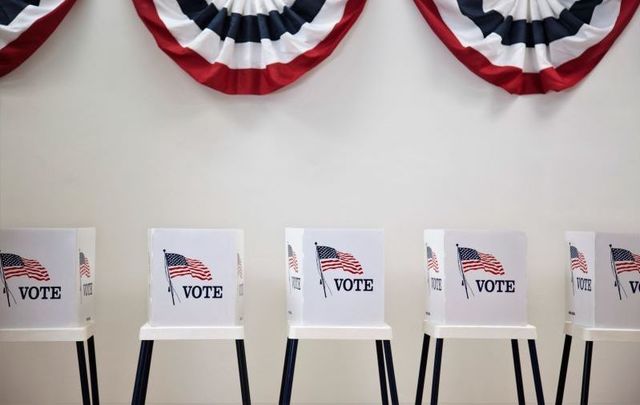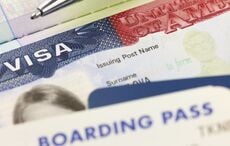The US Presidential election will be held on November 3, 2020 - find out how here to get your vote in on time if you're an American citizen living in Ireland.
According to the US Department of State, most US citizens 18 years or older who reside outside the United States are eligible to vote absentee for federal office candidates in US primary and general elections. Additionally, some states allow overseas citizens to vote for state and local office candidates and referendums.
In some states, US citizens who are 18 years or older and were born abroad but who have never resided in the United States are eligible to vote absentee.
US citizens can receive an absentee ballot by email, fax, or internet download, depending on the state they are eligible to vote in.
If you're a US citizen living in Ireland, you can contact the US Embassy in Dublin for more information.
The following information is provided by the US Embassy in Ireland:
A disruption in transatlantic flights due to COVID-19 limits the Embassy’s ability to ensure timely mail service for election materials. To ensure that your ballot or Federal Post Card Application reaches the United States as soon as possible, you should purchase an international stamp from your local An Post office and mail the ballot directly to your US election office.
If you prefer to mail your election materials through the Embassy, it may take upwards of two months to arrive at its intended destination in the United States. We apologize for any inconvenience this may cause and encourage you to continue to monitor the Embassy website for updates.
Due to COVID-19, many states have changed their primary election dates. You can find the up-to-date calendar on the Federal Voting Assistance Program (FVAP) website. The US General Election will take place on Tuesday, November 3, 2020.
Voting in US Elections from Abroad
The Federal Voting Assistance Program (FVAP) website is the official US government website for overseas voters. FVAP provides information on absentee registration for US elections, details of upcoming elections, registration dates, and deadlines. The Department of State also maintains comprehensive information for US citizens abroad who wish to vote in US elections on the Travel.State.gov website.
To vote from abroad, you must register to vote with local election officials in your state of legal (voting) residence, AND you must request absentee ballots every year. You can begin the registration process at the Federal Voting Assistance Program (FVAP) website to determine the requirements to register in your voting state. Print and sign the form, then return it to your local election office in the United States. Depending on the state in which you are eligible to vote, you may get your ballot by email, fax, or internet download and some states use postal ballots.
Include all requested contact information on the form, including your address outside the United States and your email address, so it’s easier for your election officials to reach you if there is a problem. If your state delivers ballots electronically by fax and not by email or Internet download, be sure to include your fax number.
If you request electronic delivery, you’ll receive your blank ballot at least 45 days before general and mid-term elections and generally 30 days before special, primary, and run-off elections for federal offices.
If you request a postal ballot, the above timeframe will be shorter as the ballot will need to reach you via the international mail system. Most states now have voter registration verification websites, and many offer a means of tracking the status of your registration and ballot.
For more information and guidance, please refer to the FVAP website. If you reside in Ireland and more information, you may contact the US Embassy in Dublin by email at [email protected].
Options for Returning Your FPCA or your Completed Ballot:
Federal Post Card Applications (FPCAs) and ballots must be addressed to the appropriate county board of elections in the United States. Check your office online here.
- Irish postal system: This is the most direct method. Place Irish postage on your completed, signed, dated, and sealed FPCA or voted ballot, and mail it directly to the local election officials in the state where you vote. Make sure USA is indicated at the end of the address of your US board of elections on the envelope, and then just mail it from any Irish post office.
- Fax, E-mail, or Internet: Many states allow ballots to be submitted electronically. Check the specific requirements of your state since some require you to still mail in the signed paper ballot.
- Express courier service: Voters can hire express courier companies such as UPS, DHL, and FedEx to return voted ballots. Ballots sent to local election officials via express courier service do not receive standard postmarks, so voters using this method should confirm delivery on or before Election Day prior to payment and shipment.
- Personal Drop Off at US Embassy Dublin: Due to COVID-19 limiting international flights that carry international mail this option currently may take upwards of two months for delivery. If your state requires you to return paper voting forms or ballots to local election officials, you can do so at the US Embassy in Dublin. The forms must be in a Ballot Transmission Envelope or in envelopes bearing sufficient domestic US postage and must be addressed to the relevant local election officials. You can drop off your ballot off with security personnel at the main US Embassy entrance 24 hours a day, seven days a week.
The US Embassy staff may not provide specific guidance on candidates and political issues. For information about election dates and deadlines, refer to the FVAP website or subscribe to FVAP’s Voting Alerts ([email protected]). FVAP also shares Voting Alerts via Facebook and Twitter.
Frequently Asked Questions
Absentee voting is a simple 2 step process.
Your first stop is the FVAP website. Register and request your ballot every year by completing a Federal Post Card Application (FPCA). You will need to print, sign, and date the form and send to your local election officials. All states will accept your form by mail, but they vary on email and fax. You can find on the FPCA on the Federal Voting Assistance Program website here.
When your local election official receives your FPCA, they will confirm your eligibility to vote, and will send you ballots for all federal, state, and local elections you are eligible to vote in during that calendar year. They send a blank absentee ballot electronically or by mail. You complete the ballot and send it back, so it arrives before your state’s ballot return deadline. Please read the instructions that arrive with your ballot on how to return the ballot, so it is counted properly.
Who is eligible to register for absentee voting?
US citizens who are 18 or older, residing outside the United States, and US citizens who are active duty members of the uniformed services, Merchant Marine, or commissioned corps of the Public Health Service and the National Oceanic and Atmospheric Administration and their eligible family members.
What if I have never lived in the United States, am I still eligible to vote?
Some states allow US citizens who have never resided in the United States to vote using a parent’s voting residence as their own. A list of these states is available online here.
What State should I register to vote in?
For voting purposes, your state of legal residence is generally the state wherein you resided immediately before leaving the United States, even if you no longer own or rent property or intend to return there in the future.
If you cannot remember your old address in the United States, we recommend that you check with family or friends or look at old tax forms or bills. Your election office may also be able to assist you.
Receiving your ballot
Election offices are required to send absentee ballots at least 45 days before a federal election. If you requested your ballot by email or fax, you should receive the ballot right away. If you requested it be sent by mail, allow a few weeks for it to arrive from your election official in the United States.
What if you do not receive your ballot?
If you do not receive a ballot at least 30 days before the election in your state, you can use the Federal Write-in Absentee Ballot (FWAB) as a backup ballot to vote for federal offices. If your official absentee ballot arrives after you send in the FWAB, then you can fill out and send in the official ballot as well. Your state will count only one. The FWAB is available online here.
Returning your ballot
If you receive your ballot via email, download and print the PDF package so you can complete your ballot and required forms to sign and return to your election office in the United States. This PDF package should also include a pre-addressed envelope if you must return it via mail.
Always read the instructions very carefully before returning your ballot to ensure you return your ballot correctly so that it is counted. For example, many states require postal ballots to be placed in an envelope and then that envelope put into another envelope with signed forms. This keeps your vote private. Other states require a witness signature on the outside of the envelope.
If you mail your ballot and required forms directly to your local election official, you must purchase an international stamp from your local An Post office. Postage paid envelopes are only valid if mailed within the United States. Alternatively, you can send it to the Embassy to be posted on your behalf. Please review the next section for information if you wish to use the Embassy option.
Can your ballot be submitted at the embassy?
While you cannot “vote” at the Embassy, you can submit your completed voter registration form or ballot to be mailed back to the United States, free of charge. Please note that this process normally takes 2-3 weeks to reach your local election official, but due to COVID-19 and the limited availability of international flights, it will take much longer, so please plan accordingly. When mailing your ballot, please either use the postage paid envelope you received with your ballot or provide correct US domestic postage on the envelope.
When is the next election?
Presidential and state primary election dates vary by state, but the next general election is November 3, 2020. For specific presidential and state primary dates visit this page.
Does voting have any bearing on taxes?
You can vote for federal offices without a change to your tax status but voting for non-federal offices may result in state and local taxation. There may also be tax implications when changing your residence from one state to another. We recommend that you seek legal advice if you are considering changing your voting residence.




Comments